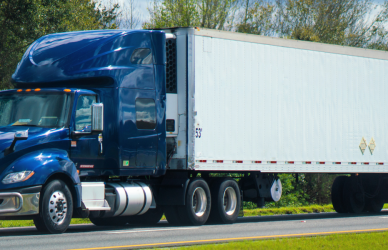Alaska’s drilling and mining projects are leading to job opportunities for truck drivers across the U.S. They will be tasked with transporting equipment, chemicals, and various other loads across the daunting 414-mile-long Dalton Highway, connecting Fairbanks to oil fields by the Arctic Ocean. Despite concerns over the potential environmental impact, ConocoPhillips Alaska’s Willow project and other developments could bring an economic boost to one of the country’s least populated states.
The Trans-Alaska Pipeline System and oil boom ignited a transformation of Alaska in the 70s and 80s. The pipeline drew in 70,000 workers and their families, leading to a population growth three times faster than the rest of the country. Many stayed, resulting in over 50% of Alaska’s current housing stock being built in those decades.
Josh Norum, president of Sourdough Express in Fairbanks, said the impending boom in drilling and mining could bring back and economy to rival those decades past.
“We’re calling it our second pipeline,” Norum said. “(The Trans-Alaska Pipeline) was a huge boom. We’re comparing that opportunity with this next phase.”
Alaskan trucking companies are offering top dollar for skilled drivers to brave the challenging haul road. With treacherous ice in the winter and dusty, muddy conditions in the other seasons, these companies need drivers up to the task of hauling their equipment. It’s an opportunity for adventurous individuals looking to score a generous paycheck.
Sourdough Express drivers on the haul road are cashing in with a salary range of $95,000 to $120,000. Plus, they receive top-notch benefits, including healthcare, retirement, and paid time off. In the past two years alone, compensation has increased by 15%. The company currently employs 85 full-time drivers with plans to beef up their team with 50-100 new recruits in the coming years.
Alaska West Express, a major freight transportation company, is boosting its operations with an addition of 50 to 100 new drivers. Gage Schutte, the company’s vice president of freight operations, confirmed the new recruitment plan. The move comes as the company aims to reinforce its services amidst a surging demand for quality shipping services.
Furthermore, the company also increased driver compensation by 11% this year, making it one of the most financially rewarding jobs in the field. According to Schutte, drivers can earn an average of $150,000 to $170,000 annually, not including benefits. Each round trip between Fairbanks and Prudhoe Bay on the haul road pays approximately $1,500, and a driver can expect to make 100 to 115 trips to Prudhoe yearly. These attractive incentives are aimed at attracting skilled drivers who will provide top-notch service across the Alaskan terrain.
Truck drivers facing dwindling freight volumes may be enticed by this lucrative opportunity. But make no mistake – these jobs are no walk in the park. The haul road’s prime condition is during winter, with temperatures plummeting to negative 20s to provide the best traction on the ice-packed road. Spring and fall leave the road slushy, while summertime brings dust or slick calcium residue.
Sourdough Express Sales Director Robb Christenson is a force to be reckoned with. For almost thirty years, he was a truck driver in his home state of Alaska, completing an incredible fifty runs on the infamous haul road. Though challenging, he counts transporting chemicals and heavy machinery near the Arctic Circle as one of his most unforgettable experiences.
“The equipment that you haul you’ve never seen before in your life,” Christenson said. “Being a part of that and doing that, it means something special as well.”
Alaska West and Sourdough prioritize safety and therefore both prefer to hire residents from the state, but with the high demand for drivers, they may have to expand their search to the lower 48. While haul road experience is preferred, most applicants do not have it. However, those with log trucking experience in the Pacific Northwest may be able to adapt quickly.
Jeff Russell, an expert at the Alaska Department of Transportation’s Dalton district, has issued a warning to drivers thinking about traveling on the infamous haul road. The treacherous terrain is riddled with snowdrifts and getting stuck could mean waiting days to be rescued. Russell reminds drivers that tow trucks are scarce, and fixing their own vehicles is a must. Think twice before hitting the haul road!
“Trying to find personnel that’s willing to take on that challenge is unique,” Russell said, “not just for those who need to maintain the road but for the trucking community who needs to have people that are willing to drive in those conditions. They’re not a dime a dozen. I can tell you that.
Alaska’s economy has been driven by oil production for some time now. However, its supply could be at risk since the state relies heavily on diesel fuel for power and transportation. Diesel fuel is expensive to import and doesn’t bode well for the state’s efforts to increase oil production.
Even with the construction of the Trans-Alaska Pipeline in 1977, which increased oil production, Alaska’s oil reserves have since been depleted. Output peaked in 1988 at just over 2 million barrels per day (bpd) but now falls more than 75% below that figure.
While there have been a few fluctuations in oil production over the years, Alaska’s oil production has been in decline for the past decade. Today, the question remains whether it will rebound and retake the 500,000 bpd mark. This increase could result in a resurgence of the annual oil and gas dividend paid to eligible residents of Alaska.
The current price of Alaska North Slope crude is at $76 per barrel, which is down from recent peaks, but still very high when compared to the 1980s to 2000s. There’s a lot of uncertainty around how this will impact Alaska’s oil production in the future.
The largest investment in Alaska energy infrastructure in decades has been approved by the Biden administration. The $8 billion ConocoPhillips Willow project, estimated to produce 200,000 bpd over the next 30 years, is set to boost oil production on the North Slope by 40%. The development of newly discovered fields farther west is also in the works. Meanwhile, the $2.6 billion Pikka project, a joint venture by Oil Search and Repsol, is expected to produce 120,000 bpd by 2026.
This resurgence of Alaska’s oil and gas industry will likely create demand for construction, oilfield services, and transportation jobs in the remote North Slope. However, the project has been met with opposition from climate activists as it has been dubbed a “carbon bomb.” A proposed gold mine may also contribute to boom, though some Alaska Natives fear it may endanger their access to fish and game resources. Despite this, lawmakers, the oil industry, labor unions, trades, Alaska Native groups, and North Slope residents have rallied behind the Willow project.
Source: FreightWaves











